In the price sensitive Asian LED market, smart lighting products remain a field where only a few brave vendors have ventured into. The Thai LED lighting market was no exception, and only a handful of smart LED products were displayed at EcoLightTech Asia 2014, which took place recently in Bangkok, Thailand.
Foreign manufacturers headed the innovative or interactive LED products displayed at the show, and there were only a couple of new Thai LED lighting manufacturers showcasing smart lighting products. Many smart lighting manufacturers had just started in the Thai lighting market, such as French LED manufacturer Soitec, new Thai LED company Lumoz, and Chinese smart LED manufacturer MiPower.
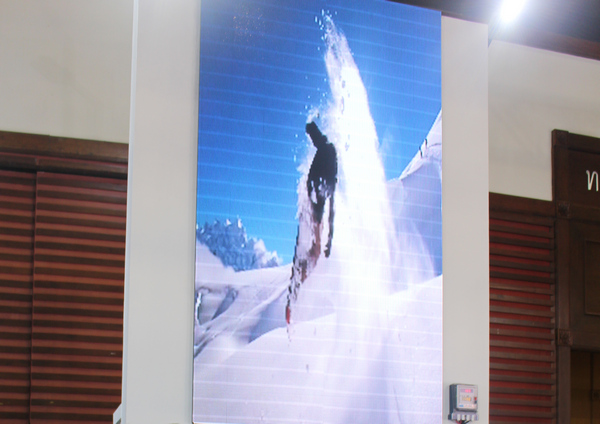 |
|
Civic Media's CM Smart LED Display. (LEDinside) |
Automated lighting systems to cut energy bills
Lumoz, a newcomer in the Thai LED industry attracted plenty of inquiries from curious competitors. The smart lighting system displayed can be controlled via Ethernet for long range applications, was the only smart lighting system displayed at the show. The system operates on controllers certified by U.S. control developer Crestron to dim or turn off the lights, explained the company founder and Product Development Manager Nathan Kulvadhanaphan, who has a strong background in computer engineering.
 |
|
Nathan Kulvadhanaphan, Product Development Manager and founder of Lumoz, a subsidiary under AKJ Enterprise, (left) and Chanudetch Wuthipong (Dej), Sale Manager, Lumoz. (LEDinside) |
The company aims to bring affordable smart lighting system to the Thai LED market. “I believe if I can make the smart lighting system affordable to the end user, more people will be willing to use the system,” said Kulvadhanaphan. Lumoz’s smart lighting system targeted price for a small studio setting is around 60,000 Thai baht (US $1,831).
Most of the company’s LED tubes used for projects use Chinese LED components. “Before we used Chinese LED chips for all our LED tube products, but now we are using different LED chips, depending on the lighting application,” explained Kulvadhanaphan.
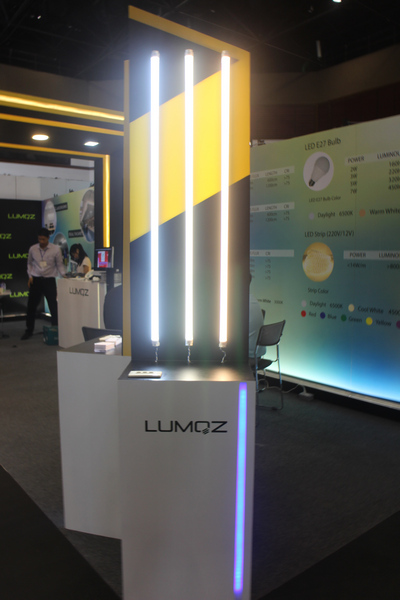 |
|
Most of Lumoz's LED T8 tubes use LED components imported from China. (LEDinside) |
Despite being a new player in the industry, the company’s products are already being tested in a pilot projects for a five star hotel, although details were not revealed because of a confidentiality agreement signed with the client. For garage lighting applications, Lumoz smart lighting system employs photosensors to track the amount of light exposure to determine when to switch on or dim the lights, explained Kulvadhanaphan. The company is also in talks with a luxurious car brand dealer to bring the technology to interior car lighting applications in Mercedes Benz vans, limos, or other car dealerships, and aims to bring the smart lighting system to parking, hotels, industrial lighting and other commercial lighting applications.
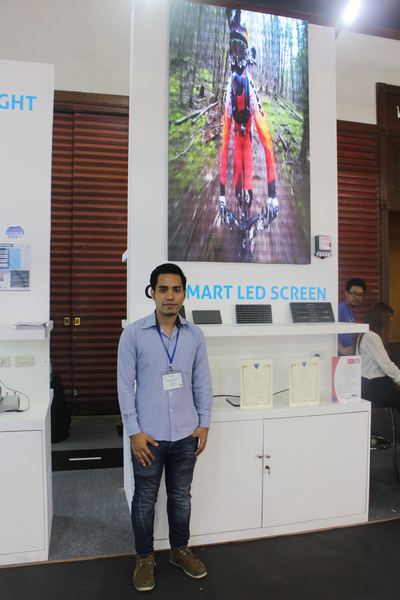 |
|
Civic Media displayed its new CM Smart LED Display at the show. Panuwat Chavalit, Marketing Supervisor, Civic Media poses in front of the company's new product. (LEDinside) |
Smart LED displays
Leading Thai LED display manufacturer Civic Media demonstrated its smart LED display that was launched at the lighting show. The CM Smart LED Display is mainly applied for outdoor building displays. The WiFi controlled smart screen can be operated via tablet operating system, which was demonstrated on an Android tablet at the show. The company developed the control software, and is targeting media companies, ad agencies, building owners and government departments with the product, said Panuwat Chavalit, Marketing Supervisor, Civic Media.
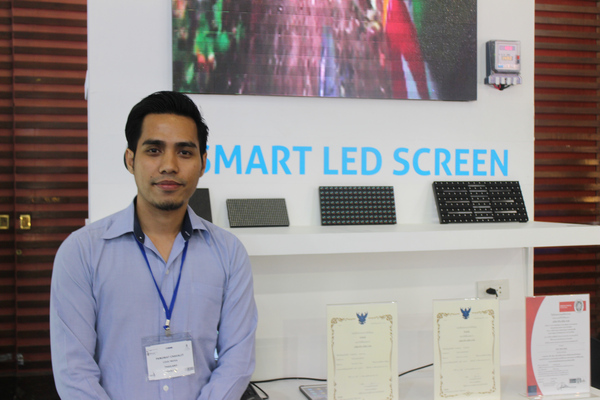 |
|
The company's LED display products are being exported to the Japanese market, where most of the orders are coming from, said the company's Marketing Supervisor Panuwat Chavalit. (LEDinside) |
Similar to most smart LED products, the smart LED displays come with a hefty price tag. A small one square meter sized display can cost 50,000 Thai baht, prices can be even more costly depending on the display size, chips used and distance from the building. Most of the company’s LED displays uses Cree or Nichia LED chips.
The company is mainly exporting its products to the Japanese market, where it has a strong client base. “Up to 25% of the company’s LED displays are exported to the Japanese market,” he explained. Over the past year, the company’s LED displays, which have been sold to local Thai governments, has generated a revenue of 250 million Thai baht.
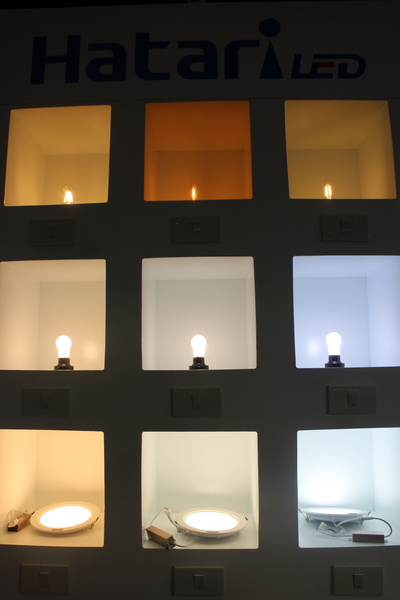 |
|
LED products displayed by Hatari at EcoLightTech Asia 2014, in the middle row are the company's liquid LED bulbs offered in various color temperatures. (LEDinside) |
Liquid LED bulbs without heat sinks
Thai LED manufacturer, Hatari, introduced a heat sink free LED bulb that is filled with a patented liquid. “The chemical components of the liquid is a trade secret, so I can’t tell you that,” said the company’s Vice President Dennis Stech. He referred the liquid as oil on several occasions during the interview, and assured the non-toxic liquid was sealed within the bulb to prevent leaks.
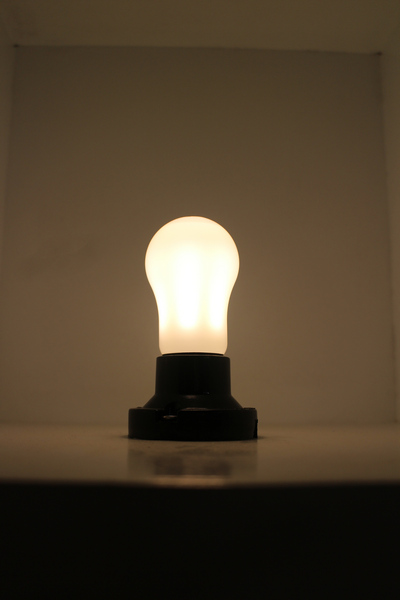 |
|
Up close Hatari's heat sink free LED liquid bulbs. The bulbs are relatively warm upon touch. (LEDinside) |
The small PVC encased liquid LED bulb has a 360 degree beam angle, and with an IP 68 connector can be used in underwater applications, said Stech. The bulb remained intact and functioning after a drop test at the booth. In the Thai LED market, new lighting product models come out every three to six months, he explained. “This really keeps us on our toes,” he added.
As a traditional fan manufacturer, Hatari made the transition into LED lighting industry after acquiring a large Thai LED lighting manufacturer BlinQ. The company continues to use the brand name in Europe to promote its products, where BlinQ is a more suitable and appealing name to Western consumers, explained Stech.
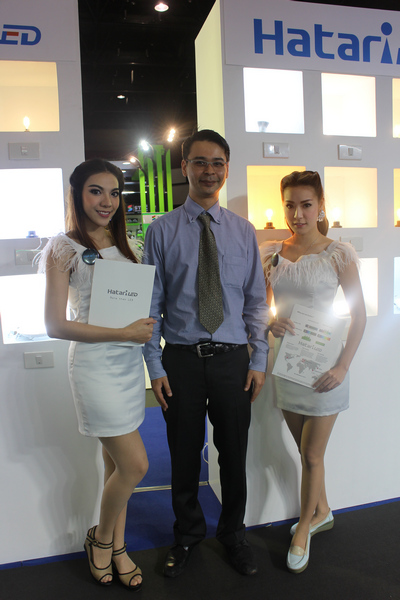 |
|
Hatari Vice President Dennis Stech (center) poses with show girls at the company booth at EcoLightTech Asia 2014. (LEDinside) |
Most of Hatari’s products in China. The company is involved in factory, government, retail, and department store lighting applications. Some of its LED displays manufactured under subsidiary Adworks are applied in one of Thailand’s largest banks Kasikorn Bank, CM Paragon, Toyota, real estates and department stores. Stech pointed out the company has plans of further expanding lighting products for commercial applications.
(Author: Judy Lin, Chief Editor, LEDinside)



















